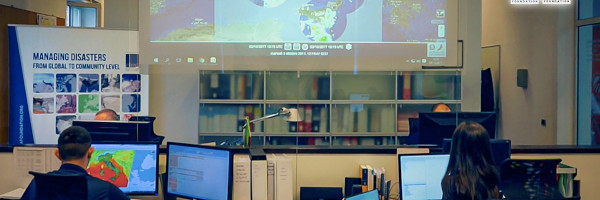Real Time Resilience
| Real Time Resilience | |
|---|---|

| |
 CIMA Research Foundation | |
| Team Organizations | Leonardo Finmeccanica CIMA Research Foundation ENEA Integrated Planning Policy and Regulation European Commission |
| Team Leaders | Paolo Castiglieri |
| Participating Municipalities | Genoa Italy Florence Italy Bari Italy |
| Status | Master Planning |
| Document | None |
Description
Objectives
- Improve the process of collecting environmental data from sensors coupled with existing geo-referential data about critical infrastructures and exposed people.
- Improve analysis, management and use of relevant data and practical information (Priority 1-a - Sendai Framework for DRR - UNISDR).
- Develop and test new tools to improve citizens safety and security based on early warning systems, and high resolution nowcasting and short-term reactions to emergencies.
- Improve the knowledge of the territory and of the resilience capability of critical infrastructures .
Challenges
- Develop, maintain and strengthen people-centred multi-hazard, multisectoral forecasting and early warning systems, disaster risk and emergency communications mechanisms, social technologies and hazard-monitoring telecommunications systems (Priority 4-b - Sendai Framework for DRR - UNISDR).
- Testing new ways to engage citizens on a more structured and systemic approach, to leverage social force in anticipating and reacting to emergencies
Solutions
TBD
Major Requirements
- Assessment of specific requirements from the city(ies) involved
- Adaptation of the existing solution according to such needs
- Testing application pilot in a controlled real environment
- Refinement of application’s performance according to the feedback gathered
- Scale up the solution to a broader coverage
- Deployment of solution in cities
Performance Targets
| Key Performance Indicators (KPIs) | Measurement Methods |
|---|---|
|
a= weight of single data-set cluster; b= number of connection with other cluster; c= weight of total interoperable data
a= number of exposed people at specific risk (EPSR); b= number of EPSR connected to dedicated warning communication systems.
a= time of occurred event; b= time of early warning
a= benchmark of short-term reaction time; b= short-term reaction time using new tools |
Standards, Replicability, Scalability, and Sustainability
- on SSS (Security Supervision System – included in HARMONISE European Union Project http://harmonise.eu/ ):
Making-decision support system used in the city of Genoa that provides intelligence and resilience to complex urban built infrastructures and tools for mitigation, preparedness and response phase on resilience cycle.
- on RESOLUTE (resolute-eu.org):
Resilience management guidelines and operationalization applied to urban transport environment.
- on PLUG–IN:
Data traffic processor from multiple heterogeneous sources, to estimate and determine the status of traffic of the system and to provide traffic status forecast information.
Cybersecurity and Privacy
TBD
Impacts
- In terms of data generation, the expected benefits are on one hand the use of conventional data collector currently not applied to climatological purposes (eg. "black boxes car insurance" of road vehicles, etc.) on the other hand the study and the development of new reliable low-cost sensors.
- In term of data collecting, is expected the development of a replicable digital platform easily adaptable to the needs of territories and communities with different characteristics and different risks to be faced.
- In term of data processing, is expected the involvement of the academic research in developing of new and more effective algorithms to improve data treatment and management.
- improve the systems of weather nowcasting, forecasting and mid-long term climatological previsions to give better, smart safety tools and services to the city and citizens.
- Data will also be used more efficiently for accelerating the city decision process and response time to emergencies.
Demonstration/Deployment
- Phase I Pilot/Demonstration June 2016:
- Local condition analysis and sensors infrastructure deployment
- Deployment of an application pilot in a real environment
- Adaptation of the existing resilience management platform used in the city
- Testing the performance with a set of early adopters
- Demonstrator Assessment and validation
- Phase II Deployment June 2017:
- Integration of the different cities pilots through the pivotal point of interoperability
- Deployment of the integrated solution in the urban areas
- Replication to the metropolitan area via a dissemination plan